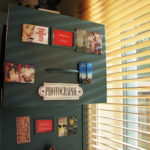
As we pass the 30-year mark in our home next week, the tall tree in the right rear corner of the yard, an Incense Cedar, stands tall and true, more than twice the height of the house.
When we moved in, there were two tall trees. The left rear corner held a Monterey Pine, so enormous and overgrown that many low branches reached 25 feet across the yard to touch our deck. Others extended over our neighbor’s fence, then across her yard, to rest on the opposite fence on the far side.
The pine was a happy, magnificent, giant forest tree, but clearly it lived in the wrong part of the world. The neighbor remembered that the pine had been a smallish living Christmas tree that the previous owners of our house had plunked into the ground just a dozen years before. The neighbor and I removed 20 huge, low limbs with a pruning saw one day shortly after we moved in, then we had a tree guy come in and take off another 15 higher limbs. A few years later, another tree tried to remove the pine, which by then was over 60 feet tall and continuing to grow rapidly, but he couldn’t deal with its massiveness in our smallish suburban backyard.
Eventually a different pair of tree guys who climbed like monkeys, wielded wicked chain saws, and lowered limbs with pulleys and ropes vanquished the pine. It ended up as a scatter of stump seats, a pile of firewood, and a thick layer of chips in our front and back yards (which reminds me of what pig farmers say about their livestock — they use everything but the squeal).
The Incense Cedar, however, still stands in the other corner of the yard. For a while, we tried to grow vegetables underneath, but the cedar spewed needles that stuck to our lettuce and acidified our soil. When we invested in solar power, the installers pointed out that the cedar had grown scruffy and loomed out over the new panels. “You’ll generate a lot more power if you prune that darn tree,” they counseled.
And so we did. I thought we should top the tree, cut it down from the top by a third. But this time we hired an arborist, a true, trained, tree professional whose first concern was the health of the tree. He came in with a crew of four Guatemalan Mayans, who shinnied up the cedar, rigged ropes and slings, pruned raggedy branches, and trimmed with great skill. They shaped the tree beautifully, reduced its height by a little and its mass by a lot, then installed a thin steel cable to prevent the two outer trunks from spreading apart and splitting. All in about half a day.
For the last dozen years, my office has faced the backyard, and I grabbed some video shots of this tree crew in action from the office door (SEE VIDEO BELOW). As they worked, I was treated to the powerful scent of newly sharpened pencils, as Incense Cedar is the most common pencil wood. Ever since then, every time I sharpen a pencil, the aroma brings me back to that day.
With the cedar reduced in size and mass, more light falls on the solar panels, and more light gets through to the glass blocks set high in the wall in our family room. So much, in fact, that we have had to add a window shade over those blocks, to control the sunlight in our eyes when we sit at our table late in the day.
For me, the Incense Cedar and our west-facing back yard’s orientation are my personal Stonehenge, my own solar calendar to mark the passage of the days throughout the year. I sit in my office, stare out the sliding door toward the yard as I try to write, and marvel in the change of seasons.
Does the sun actually set in the west? Well yes, sort of. I know that in winter, the sun rises, describes a shallow arc over our neighbor’s fence (to my left) on the south side of the yard, and sets well south of west. As winter advances into spring, the sun gets higher in the sky each day and sets further north, closer and closer to due west. For only one day of the year, it will go down at due west, exactly 270 degrees on the compass.
After that, it sets further and further north of west each day. At its farthest point, the sun sets so far north of west that it meets the horizon to the right of the Incense Cedar. That’s how I know it’s midsummer.





